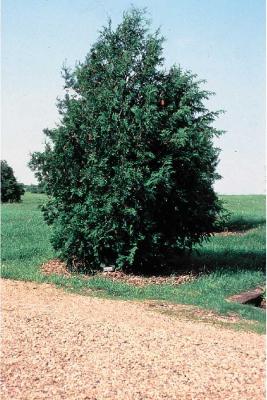Arborvitae
Description
Native shrub or tree growing to 50 feet tall, the crown narrowly conic to broadly pyramidal, with spreading, densely crowded branches; branchlets flattened, in fan-shaped sprays. It is often used for hedges and other types of border or shelter plantings. Stands of Arborvitae are valuable for wildlife habitat, particularly in severe winters for white-tailed deer, which use it for both shelter and browse. These trees also provide habitats for many species of birds.
-
Price:
$1.00
- SKU: 1
- Type: Hardwood
- Hardiness Zones: 4, 5, 6, 7
- Moisture Zones: Central, Eastern, Most, Western
- Soil Type: Clay, Dry
- Windbreak: Superior
- Erosion Control: Poor
- Wildlife: Superior
- Product Type: Bare-Root Seedlings
In stock
USDA Hardiness Zones
The primary guide to determine plant hardiness is the USDA Hardiness Zone Map, which divides the United States into ten zones based on average minimum temperatures. Each zone is then subdivided into A and B sections. A plant is said to be hardy if it can tolerate the lowest average winter temperature that occurs in a zone. Hardiness is affected by duration and intensity of sunlight; amount and timing of rainfall; length and severity of summer drought; soil characteristics; slope; frost occurrence; humidity; and cultural practices.
For more information or questions contact your nearest forester for advice.

